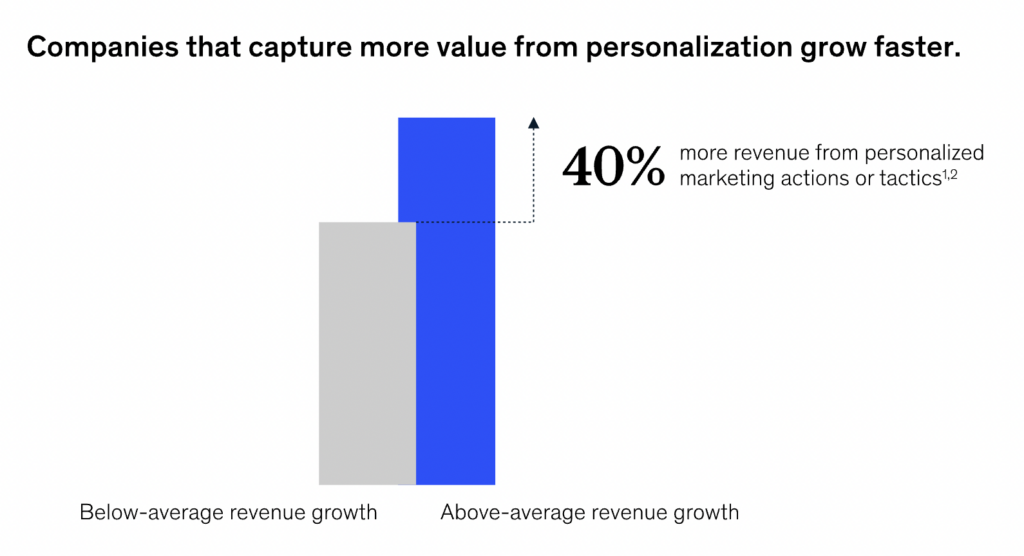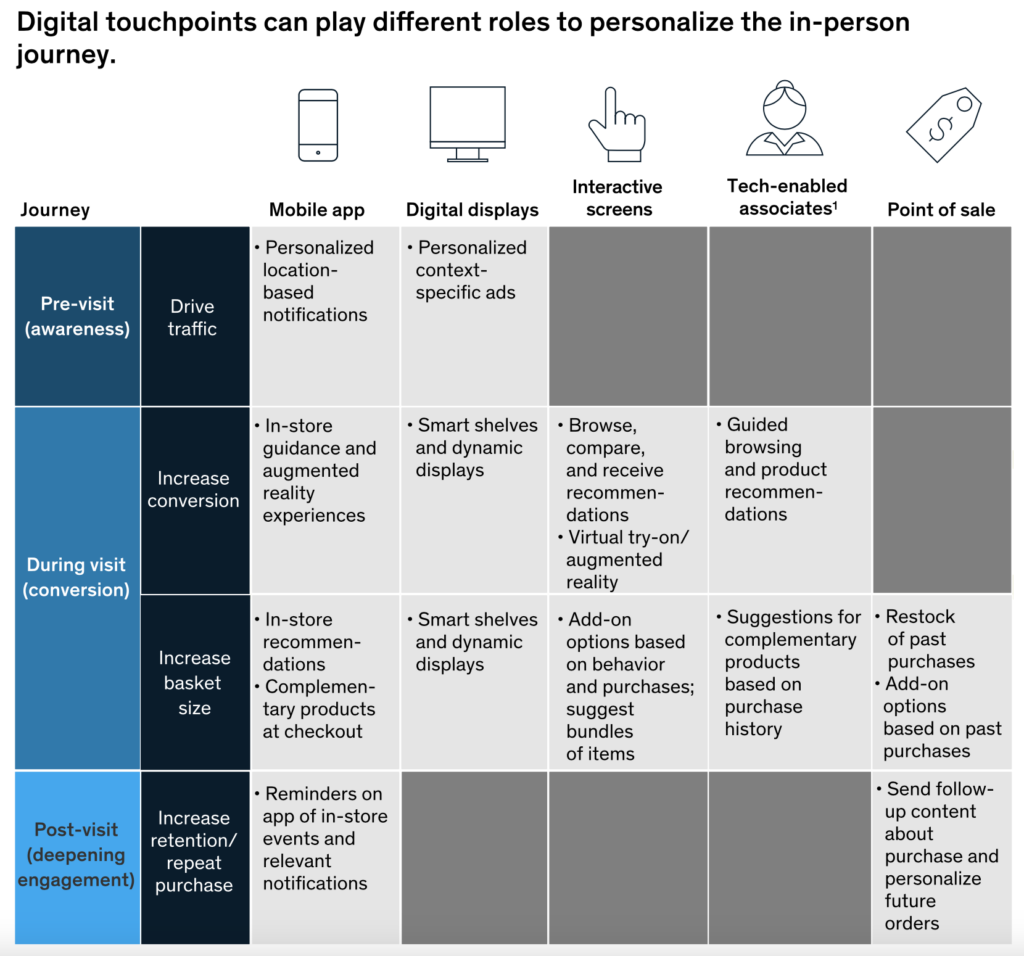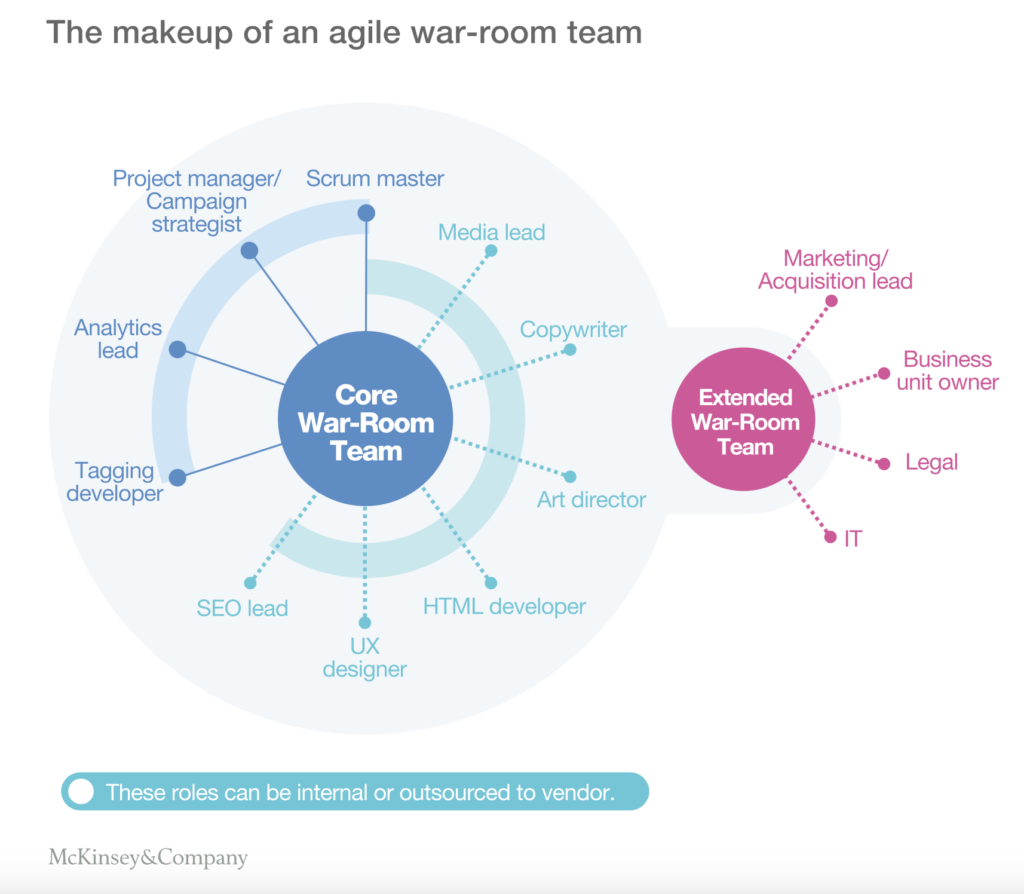
How To Align Marketing and IT For Maximum Business Growth
Executives expect collaboration among departments to achieve marketing goals. But this is easier said than done.
IT is critical for integrating digital technologies that the marketing team needs to succeed, but the two departments often speak different languages.
So, how can you get your departments to work together for success?
In this article, I’ll discuss how you can integrate digital technologies and strategies across all areas of your business.
Table of contents
What does marketing and IT alignment look like?
Marketing and IT can achieve a lot when they work together. By tapping into the IT department’s skills and knowledge, marketing can use data more effectively to drive decision making and measure performance.
IT also provides key technology infrastructure, tools, and platforms. To make it all work, IT must understand marketing’s goals and objectives.
Here are some examples of what marketing can deliver when they align with IT.
Highly personalized campaigns
Consumer expectations for marketing have evolved. Today’s consumers demand a personalized experience. Research shows that companies that deliver it enjoy higher revenue and stronger brand loyalty.
In fact, fast-growing companies derive 40% of revenue from personalized marketing actions.

Source: McKinsey
Personalization relies on capturing and analyzing customer data to understand their preferences, behaviors, and needs. IT plays a crucial role in building and maintaining systems that collect, store, and process customer data.
IT also manages the systems that help marketing segment customers based on criteria such as demographics, purchase history, browsing behavior, and interactions.
IT doesn’t just hold the keys to these systems. It also ensures data accuracy, integrity, and security, and helps marketing conduct campaigns that comply with data protection regulations.
When they work effectively together, marketers can tap into the business’s entire body of knowledge to meet consumers’ personalization expectations.
For example, Amazon’s homepage provides a highly personalized experience that uses data from a variety of systems:
- Recently viewed products (which requires data on browsing activity)
- Regularly purchased products (which requires data on purchase history)
- Other relevant deals and products (which requires data on a customer’s demographics and interests)
Though non-personalized content appears on the homepage as well, the balance is toward personalized content. The consumer feels like Amazon knows them, and the user experience promotes purchasing (and repurchasing).
It’s easier to click the “Pick up where you left off” or “Buy Again” buttons than to find the exact specification of a product and look for it on a different website.

Efficient marketing spend
Highly tailored campaigns don’t just perform better in terms of clicks and conversions. They also make marketing spend more efficient.
For example, we helped MIT Sloan Executive Education (MITSEE) develop an omnichannel marketing program to improve the customer journey while maximizing marketing spend. To balance those competing priorities, we invested in personalization.
By being more targeted on the intent of prospects, MITSEE decreased search engine marketing (SEM) spend by 56% while increasing conversations by 67%. MITSEE also rebuilt its remarketing campaigns with a focus on better targeting, with notable decreases in cost per click (-74%) and cost per acquisition (-70%).
Marketing can achieve these kinds of results independently up to a point. In larger organizations with more complex (and richer) data landscapes, marketers will typically need IT’s support to get access to relevant systems.
Likewise, the more touchpoints in a campaign, the more marketing will benefit from IT’s help in integrating data to act on results. According to McKinsey, more than half of B2C customers engage with three to five channels during each purchasing journey.
Each channel represents a new data source that must be unified with the others—ideally in an AI-powered engine that can automate personalization (e.g., delivering Next Best Offer recommendations). Marketing needs to combine its business acumen with IT’s technical skills to build such a sophisticated capability.
Top Tip: You need to optimize each touchpoint of the digital experience to turn prospects into loyal, paying customers. Learn how with our guide to creating an exceptional digital customer experience 🐼
Actionable feedback on business impact
Marketing also needs IT to evaluate the impact of its activities on business objectives.
The global insurer Allianz learned the importance of IT and marketing collaboration when it created a marketing experimentation function.
Allianz’s marketing teams historically had access only to top- and mid-funnel metrics. Without access to sales data, they couldn’t assess the impact of their work on business growth.
By bringing together marketing and IT team members in a cross-functional unit, Allianz developed a sophisticated measurement capability that included an AI-powered ROI model.
For the first time, the insurer could measure the impact of marketing on each stage of their sales funnel, down to key business growth metrics such as the number of new policies. This resulted in a 25% lift in marketing effectiveness.
Without access to business data or sophisticated analytics, marketers are hard-pressed to measure how their work performs in a meaningful way. They can optimize for top-of-funnel metrics, such as reach and awareness, but they can’t improve or even understand the impact of their work on the business.
Why does marketing and IT alignment matter?
Somewhere along the way, marketing and IT built their own islands.
“Historically, marketing has tried to build its own tech stack because of a perception that IT, as a more generalized business function, didn’t understand the needs of the technology marketers wanted,” says Gartner analyst Ben Bloom.
The siloed approach doesn’t cut it in a world where consumer expectations are growing, the media mix is becoming more complex, and technology options are increasing. Marketing needs to learn to educate, motivate, and partner with IT to make an impact on business objectives.
Top Tip: Departmental silos are just one of several common barriers to digital transformation. Knock down all of them with our strategies for overcoming resistance 🐼
Without alignment, marketing will face:
Customer churn and low acquisition rates
Acquiring and retaining customers requires marketing to:
- Deliver consistent personalized experiences across touchpoints
- Identify cross-selling and up-selling opportunities based on customers’ preferences, behaviors, and purchase history
- Identify customers at risk of churning and proactively target them
All of these activities depend on access to data from business systems managed by IT. While many of the levers that digital marketers use to create campaigns sit squarely with marketing (such as ideating social media content), some require or simply benefit from the support of IT.
The landscape grows even more complex when you consider in-person channels. This chart from McKinsey summarizes just some of the options for personalization as the customer journey crosses into the physical world:

Many of the systems and locations that appear in this chart sit outside of marketing’s purview, and many of the tactics require strong technical skills.
Inefficient marketing spend
Without insight into how marketing activities influence business KPIs, marketing can’t make the most effective use of its paid media budget.
Marketing can monitor the performance of a campaign using return on ad spend (ROAS). ROAS, however, provides limited insight into how an omnichannel campaign affects business growth because the reality is that attribution is highly technical.
Considering all the possible touches a person may have with your brand, even subliminally, makes it extremely difficult to determine the effectiveness of an ad.
To understand the impact of each of those touches and optimize spend across an increasingly broad number of channels, marketing needs to integrate and analyze omnichannel data into a unified view.
Marketing also needs access to bottom-of-funnel metrics that provide more actionable insight into campaign performance. This could include new sales, growth per region, or acquisition costs for a specific demographic. Once again, marketing needs IT’s access, skills, and knowledge.
Weakened confidence in the marketing function
Marketing needs IT’s help to deliver and manage campaigns that meet the bar in a world of increasingly complex customer journeys. Without IT, costs will rise and revenues will fall due to lower customer acquisition rates, higher churn, and inefficient media spend.
Ultimately, marketing will face the blame for failing to meet business objectives.
Marketers are feeling the pressure. The CMO Council found that 70% of marketers “don’t feel very confident in their current sales and marketing model to sell effectively to the self-reliant buyer in the digitalized customer journey.”
Efficiently delivering seamless customer journeys in a complex omnichannel landscape is within reach. Marketing leaders are positioned to achieve this goal—as long as they can align with IT.
How to achieve marketing and IT alignment
Bridging the gap between marketing and IT requires more than a one-time conversation. It requires redefining the way the two departments operate. Depending on the size, scale, and culture of your organization, this may take the form of restructuring, developing cross-functional “tiger teams,” or rotating personnel across departments.
Realigning two departments that historically haven’t spoken the same language may be tough, but it is possible. Here are the steps you can take to make the experience positive and productive:
Establish and communicate executive buy-in
Transitioning to a new objective, way of working, or organizational structure can be disruptive and disorienting for marketing and IT. Department leadership needs to partner with business leadership to get everyone on board and moving in the same direction.
Marketers must shift their mindset away from lead generation and toward business growth.
Business leaders need to communicate that marketing and IT are integral to the company’s success, and department leaders need to reiterate that throughout the process of alignment.
CEO David Paragamian spoke on this in his book about transforming his company:
“Change relies on people. For them to buy into transformation, to make it happen, you’ve got to give them a vision. People would rather know they’re building Notre-Dame Cathedral than just chiseling stone.”
Top Tip: Getting leadership buy-in can take time and effort. Sharpen your persuasion skills with our guide to getting boardroom buy-in for digital maturity initiatives 🐼
Articulate your shared business goals and individual responsibilities
A sense of shared purpose is a great start, but it isn’t specific enough to achieve alignment.
Next, marketing and IT need to identify the business objectives they’re working toward, and determine what each department is accountable for on the path forward.
Objectives should align with overarching company objectives. For example, if the company’s north star is to reduce costs, IT and marketing might identify an objective such as making paid media spend more efficient. Eventually, objectives will inform lower-level goals for specific experiments.
After the two departments have aligned on shared goals, they can determine what each function is responsible for and how it will be held accountable. The breakdown may look like this:
- Marketing is responsible for identifying campaign goals and channels, developing content, and providing IT with sufficient business context
- IT is responsible for providing access to data systems and integrating and analyzing data
- Both teams are responsible for, and encouraged to, identify opportunities for improvement
Marketing and IT leadership should define this breakdown more granularly and get it on paper so that everyone involved has a common reference point.
Build the right team structures and processes
Once marketing and IT know where the two departments are going, it’s time to figure out how to get there.
The right organizational structures and project management methodologies for a company depend on its size, scale, and culture. But here are some high-level tactics that have helped a variety of companies align siloed functions:
Consider an ad hoc team strategy
Some companies opt for building smaller teams that are each dedicated to a narrowly defined goal, product, or service. Such teams are typically organized ad hoc. Members are seconded from their day jobs until the team meets its goal, then the core marketing and IT departments scale the results across the organization and team members return to their usual duties.
The makeup of an ad hoc team (also known as a war room, tiger team, pod, or any number of other nicknames) depends on how the company does business and the nature of the goal in question.
A retailer seeking to improve the customer journey in-store and online could bring together marketers, data scientists, in-store operations managers, and hardware technicians.
A telecommunications company that wants to reduce churn could opt for call center managers, marketers, UX experts, and data scientists.

When Coca-Cola wanted to understand how tweaking its media mix would impact its sales in certain countries, it set up a small orchestration team and deployed people around the world to augment local marketers with data analytics skills.
In its first experiment, this team identified the optimal range for connected television (CTV) in the media mix and connected CTV ad investment to sales, not just media impressions, for the first time. Now, Coca-Cola runs 50–100 experiments each quarter.
Try out Agile (or something similar)
Formally introduced in 2001, the Agile project management methodology has become the de facto standard for technology teams. It’s also become popular among non-technical teams looking to develop a culture of iteration and experimentation.
Agile has many offshoots that incorporate the core principles, such as continuous delivery of value, cross-functional teamwork, and face-to-face communication.
For example, Smart Panda Labs uses the Lean methodology, which incorporates elements from Agile (along with Six Sigma, design thinking, and other popular management philosophies). It’s an effective methodology for optimizing every touchpoint of the digital experience.
Define a communication framework to connect the two departments
To stay productive, minimize interpersonal conflict, and promote transparency, it’s helpful to set guardrails around how these two departments communicate. For example:
Pick communication channels and stick to them. If IT captures project conversations on ClickUp, but marketing only chats on Slack, conversations will fragment across the two channels. Choose the channels that both departments will use and define how and when to use them. Push conversations that start elsewhere to the appropriate channel.
Make decision-making processes clear, transparent, and consistent. Involve all relevant stakeholders in discussions that affect them, and minimize side conversations. When a person or team makes a decision, share the rationale to minimize gossip and speculation.
Establish a process for conflict resolution. Organizational change tends to generate and exacerbate interpersonal issues that can quickly become toxic to the culture. Encourage open and respectful dialogue, and provide channels for raising and resolving issues.
These are just a few examples of how to promote open, constructive communication between two groups that often don’t speak the same language.
Key takeaways
Today’s omnichannel landscape offers marketers the opportunity to meet consumers anywhere and everywhere, with content that caters to their individual needs, characteristics, and interests.
Companies that take advantage of this opportunity are poised to succeed, but marketing can’t do it alone. The department needs to find common ground with IT to gain access to relevant systems, tap into technical skills, and integrate data and digital experiences. Alignment calls for dramatic changes in how each department operates and how the two departments interact.
Aligning marketing and IT takes dedication and commitment from the C-suite down, but the effort pays off when the departments can jointly deliver the seamless digital experiences that today’s consumers demand.
Marketing and IT alignment is the only way to increase revenue, reduce costs, and sustain business growth long term.
READY TO PROVIDE A BETTER POST-CLICK EXPERIENCE?
Get insights and tips to drive more business from less ad spend, more profit from less cost, and more customer value from less churn.